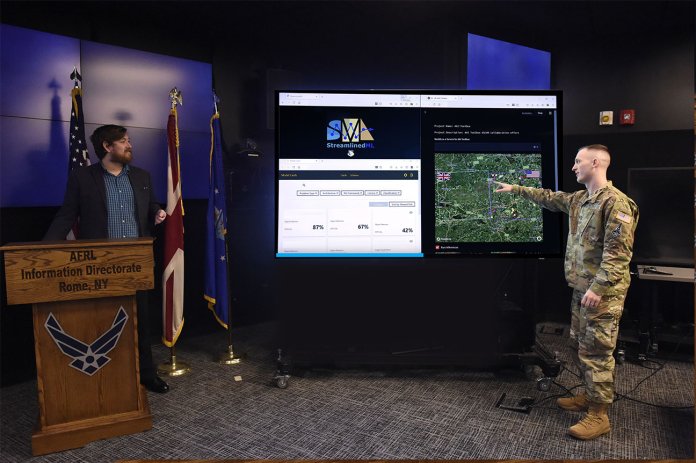The United Kingdom’s Defence Science and Technology Laboratory (DSTL) and the United States’ Air Force Research Laboratory (AFRL) have created a four year research partnership to “develop, select, train, and deploy state-of-the-art machine learning algorithms” in support of each nation’s armed forces.
Brigades from both countries were to be supported with “enduring wide-area situational awareness” which was stated would improve their respective decision-making, increase operational tempo, reduce risk to life, and reduce manpower requirements.
The dual in-person and virtual demonstration was hosted jointly at AFRL’s Information Directorate in Rome, New York, and at DSTL’s site near Salisbury on 18 October 2021. The demonstration highlighted integrated artificial intelligence (AI) technologies across both nations, showcasing the ability to share data and algorithms through a common development and deployment platform to enable the rapid selection, testing, and deployment of artificial intelligence capabilities.
The partnership is a result of a joint agreement founded in December 2020 which addresses autonomy and artificial intelligence collaboration. It represented the first of a rotational series of events to be hosted by the joint and international signatories of the Autonomy and Artificial Intelligence Collaboration (AAIC) Partnership Agreement.
Technology from both nation’s was used. The UK’s Model Cards can present a commander with the ability to quickly understand, explore, and select appropriate machine learning (ML) models to deploy in mission. The US StreamlinedML is a government-owned, extensible open platform to quickly build ML workflows, train and evaluate ML models, and deploy them regardless of the source or ML software stack use – taking advantage of the best of breed ML technology spanning commercial, academia and government.
According to Dr Robert W Sadowski, US Army DEVCOM: “Advances in robotics and autonomy will make our formations more capable and mission-ready while providing protection to our warfighters through unprecedented stand-off while enabling enhanced lethality on the battlefield.”
Dr Lee M Seversky, AFRL lead for the demonstration and the US Project Agreement, said: “The 18 October event demonstrated how the UK and US can integrate AI technology to create the first end-to-end machine learning research, development, and deployment ecosystem, enabling rapid data sharing, algorithm development, evaluation, and deployment.”
DSTL’s Todd Robinson who heads up the UK element to the project said: “The demonstration is just the first step toward our ambition of deploying novel AI that can learn in the field into an experimental trial environment, something that hasn’t been done before and is only possible due to this collaboration.”
“The demonstration successfully showed the integration of 15 state-of-the-art machine learning algorithms, 12 UK and US datasets, five automated ML workflows for training and retraining models based on mission needs, and the ability deploy the models as a service to target end users and platforms.”
by Andrew Drwiega













